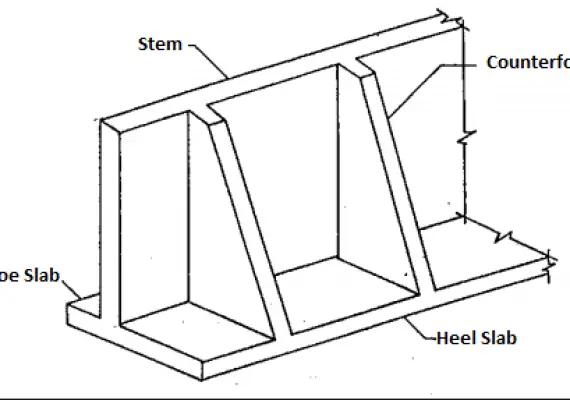What is Grouting | Types of Grouting | Grout Cement
What is Grouting | Types of Grouting | Grout Cement
What is Grout?
Grout is a composite material of generally a mixture of cement or chemicals, water, and sand used in concrete crack repairs, sealing joints, fill gaps in tiles, filling voids, seal and fill gaps for waterproofing, and soil stabilization. Grouts are also used to boost the strength of the foundations on load-bearing structures.
What is Grouting
Grouting is the process of applying the grout to the surface, cracks, gaps, voids, or the final step of installing ceramic wall tile once the adhesive has fully cured.
It is typically used to fill voids, gaps under machines or other structural parts, seal joints and openings in surfaces, and reinforce existing structural elements.
Advantages of Grouting Include:
- Grouting can be done on almost any floor condition
- Grouting control water seepage, groundwater inflow and can prevent leakages
- Grouting is used to strengthen and support to avoid structural damage in case of vibrations.
- Grouting improve of the aesthetic look of the floor
- Grouting is used for slabjacking that lifts or levels the deformed foundation
Characteristics of Good Grout
- Grouts that is Non-corrosive
- Grouts that is Not flammable, non-toxic
- Grouts that that does not shrink
- Process and its Specification
- High Impact and vibration resistant
- High strengths
- Easy substrate preparation
- Excellent flow characteristics
- Good Bond to co
- Has No bleeding or segment
- Easy to use /apply
Types of Grouting
Cementitious grouts
Cementitious grout is used to create a stable bearing surface among structural baseplates and base foundations. It permits even dispersal of the load into the existing concrete slab.
The grout will assist in transferring the general load of the column into the concrete foundation. Cementitious grout is appropriate for a range of different bedding and solving applications.
These encompass foundation, bearing plates, and metal structures. Cementitious is further
divided into Unsanded grout, Sanded, and Latex modified grout.
Sanded Grout
Sanded grout is the most commonly used for ceramic tile, stone, and any tile with a grout joint or larger. It consists of Portland cement, sand, and different components, it’s far blended with water and troweled into the grout joint, wherein it takes approximately 24 hours to dry.
Sanded cementitious grouts consist of fairly massive sand particles that can be seen and felt-they appearance and feel gritty.
Sanded grout is normally endorsed when the grout seams are 1/eight-inch-wide or extra, as the sand presents more bonding power that stops cracking.
Unsanded grout
Unsanded grout, normally known as “wall grout,” is essentially sanded grout with out the sand. Unsanded grout used on ceramic tile and polished marble with grout joints smaller than 1/8 inches.
All the cleansing troubles associated with sanded grout follow to wall grout, which needs to be sealed after installation to lessen absorbency.
Unsanded grouts have a far smoother texture because the mineral debris they comprise is very nice powders that haven’t any substantial grit.
They are used with grout seams, which can be 1/sixteen to 1/8 inch wide.
Latex modified grout
Sanded grouts can be formulated with a latex polymer additive, either covered within the dry mix or introduced because the grout is mixed with water.
The additives are blends of acrylics and Latex and decrease water absorption, boost power, and enhance coloration retention.
Some grouts have dried latex powder introduced to them at the manufacturing unit and do not require extra components.
Chemical grouts
Chemical grouts (injection) are an emulsion of water and liquid resin. Chemical grouting requires injection of in particular formulated chemical grouts into finer cracks that cannot be possible by way of cement grouts.
Some of the famous ones are epoxy, acrylic, and furan resin grouts.
Epoxy grout
Epoxy grout is strong and sturdy. It is exceedingly resistant to stains, cracks, chemical compounds, harsh weather conditions, and climate changes. These characteristics make epoxy grout the best type to go for if you’re seeking out the most long-lasting, efficient way to do tile work.
The strength of epoxy grout makes it ideal for any tile process, indoors, or exterior. The stain, crack, and chemical-resistant homes make it appropriate for areas with excessive traffic.
The resistance to weather and weather changes makes it ideal for regions in which it will be subjected to harsh climate situations or excessive amounts of humidity. Epoxy grouts also tend to be less fluid than cementitious grouts.
If you are grouting under large equipment or base plates, it can be easier to apply a loose flowing cementitious grout.
Epoxy grout will not fall apart and begin to crumble over time, while conventional grout products tend to weaken, making it much more likely you may incur the cost of redoing your tile sometime in the future in case you use cement-based products. With minimal maintenance, epoxy grout will last a lifetime
Acrylic grout
With acrylic grout is which you don’t have to cowl the whole work floor. You can just apply it within the joints between the tiles. The silicone additive, which comes premixed with Portland cement grout, aid in more adhesiveness.
Because of its stability in cold areas, it can be used outdoors, making it best for the deck floor. The additive enables the grout to maintain colour and withstand stains. It’s the kind of grout that is common in fast-food restaurant flooring.

